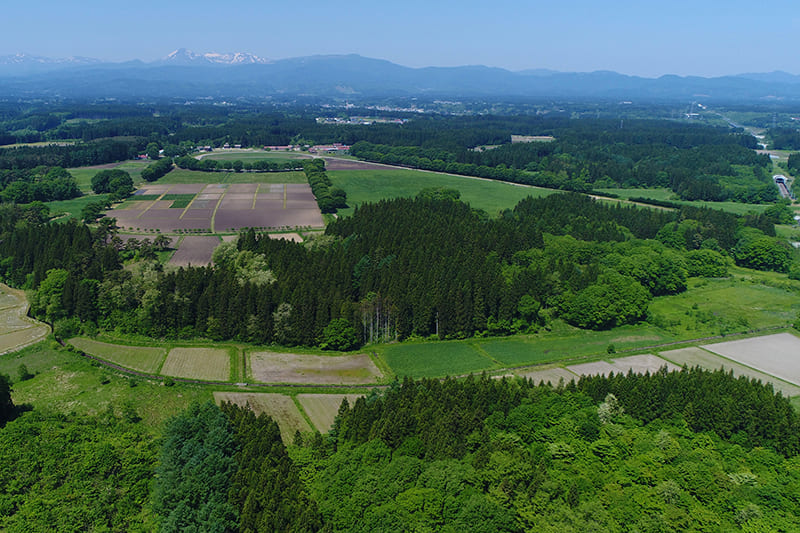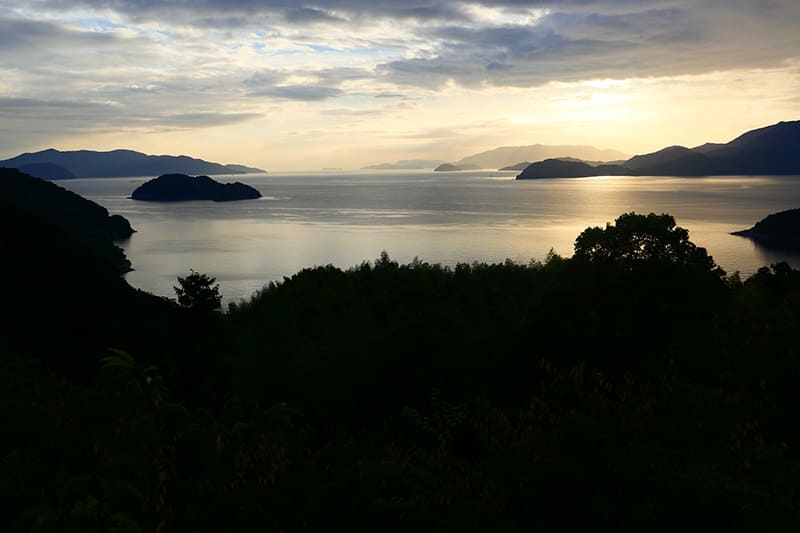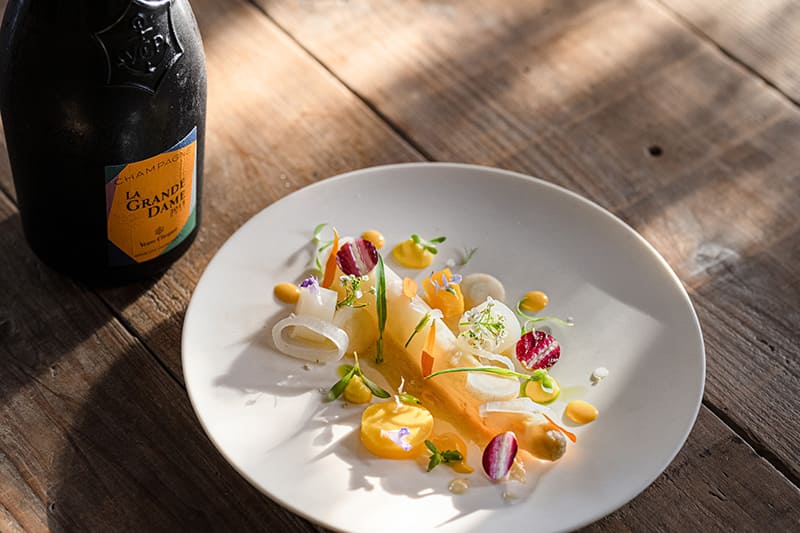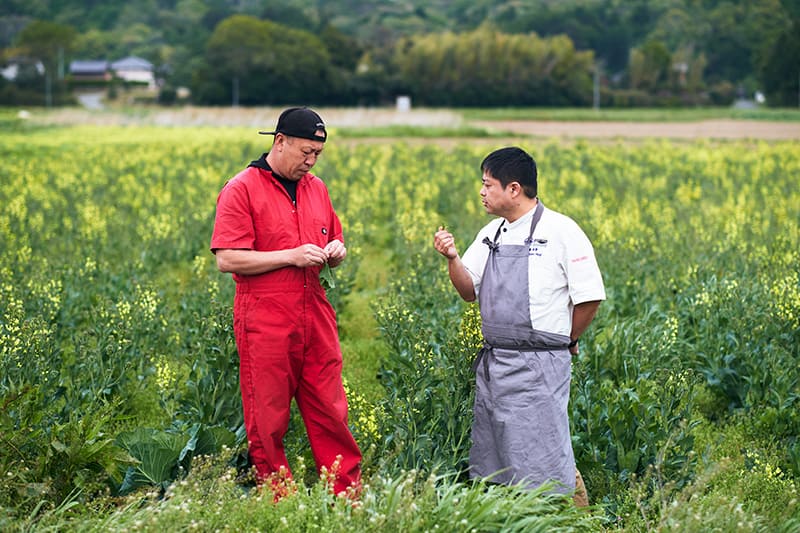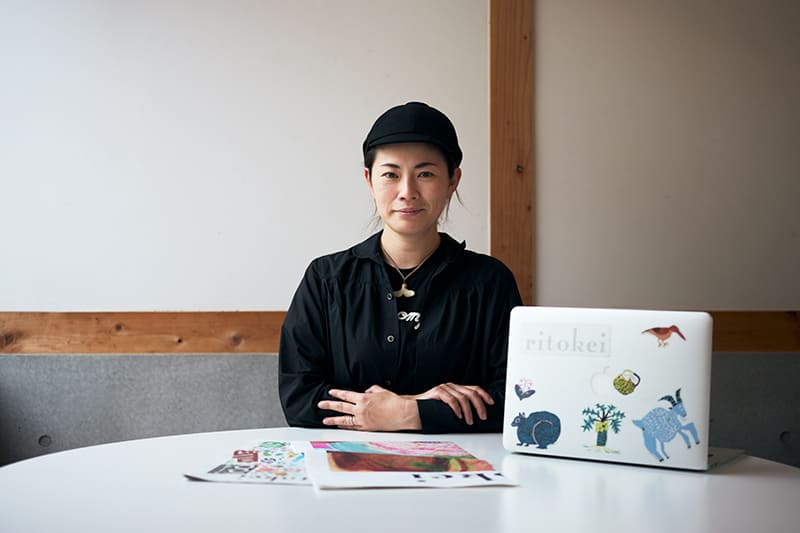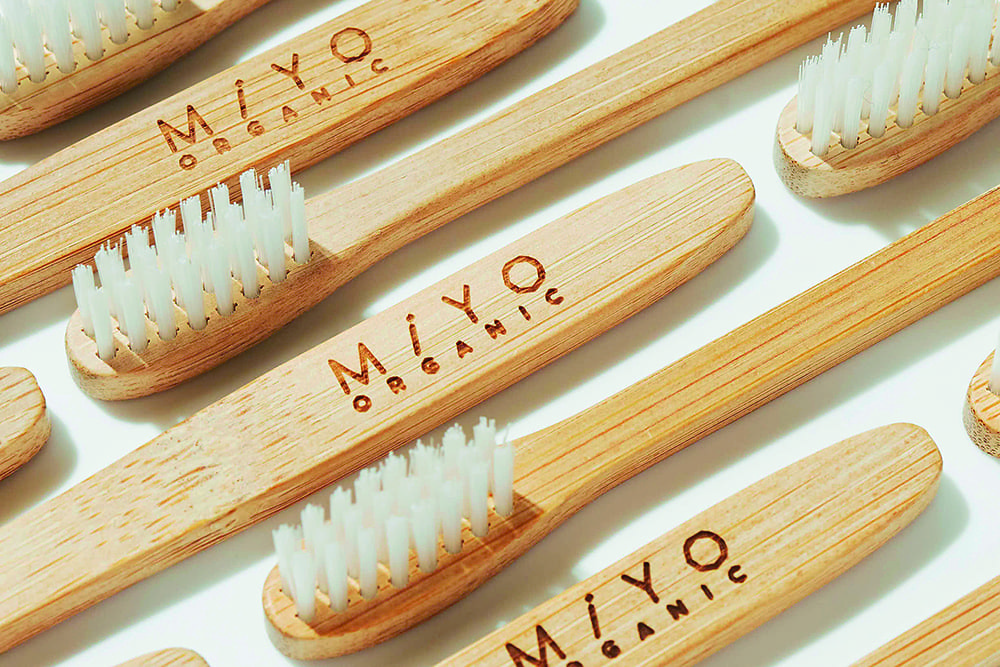December 22, 2023
The growing wisdom of ‘zero-yen’ living
SATOYAMA CAPITALISM 2024 VOL.3
TRANSLATORS:TAKU NISHIMAE+CANNON HERSEY
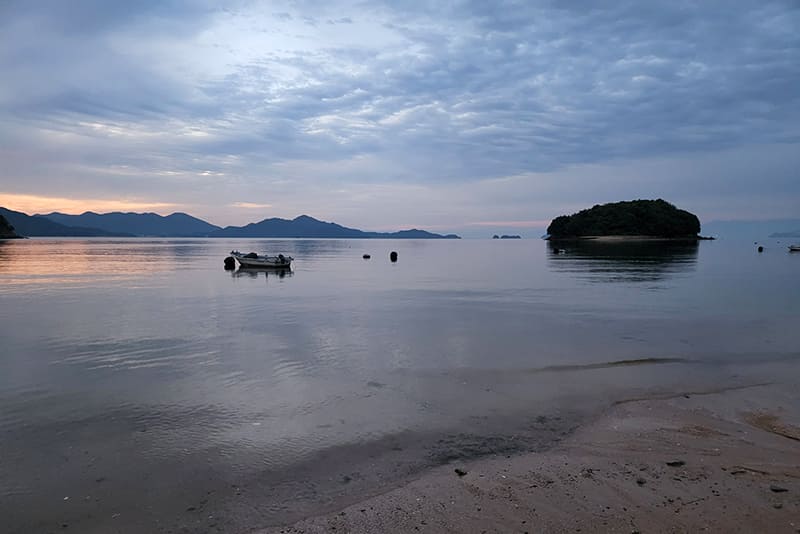
PHOTOS: KYOSUKE INOUE

I visited a dear friend of mine, Ms. Kaori Niizato, on a little island called Mukaishima across the sea from Onomichi in Hiroshima. She is a dyeing artist with a strong will and beauty. Her specialty is to dye canvas using branches pruned from fruit trees and traditional persimmon tannin to make bags and pouches. Her American partner, Thomas, who is more than 10 years younger, is also an old friend of mine.
The two often surprise me, but I am unfazed because of their “starting point”.Their wedding ceremony took place several years ago at an inn in a former samurai residence, which was like stepping back in time to an Edo era. I attended with my son, and we shared the unique experience of harvesting rice together and making rice cakes instead of cutting the wedding cake.
This couple are masters of satoyama rural living, taking advantage of the good and not-so-good things about the Setouchi region. They live in a traditional storehouse with an earthen wall. It used to be a farmer’s barn but was renovated for about ¥3 million ($20,000). The rent is zero yen because the house was abandoned due to depopulation. The surrounding fields and mountains are also rented for zero yen. The owner of the property is grateful rather than being patronizing, as Kaori and Thomas have restored the traditional terraced fields to their original state. The fields had been blighted by weeds and wildflowers, but the couple let goats and sheep loose for a year to thoroughly eat the weeds. They keep pigs, chickens, ducks and sheep, and sell only turnip leaves as an organic, pesticide-free vegetable via home delivery service throughout Japan while their client base grows.
In the morning, Kaori opens the wooden door to Buchan, a 60-kilogram pig, and feeds him with grass pulled from the area. He eats it while grunting “bū-bū!” and rubbing his face against her palms. He loves Kaori. That is why Kaori says, “I can’t eat Butchan!” although she likes pork. She says the existence of the pig itself is a symbol of the “eco life” and the healing of minds because the weeds she pulls out, as well as leftover food and scraps of harvested vegetables do not go to waste. When a fashion magazine writer in Tokyo came to interview Kaori, she sighed in admiration at her stress-free, ultraorganic lifestyle. She said Kaori was even better than the actress Nicole Kidman, who was introduced in the magazine as a master of organic living.
I sat around a fire in the garden at dusk, slept in a room overlooking the ocean and went out to the beach before dawn. The Seto Inland Sea, with only the gentle sounds of waves and birdsong echoing in the air. A round island in front of us. A few small boats. I placed my high-performance movie camera on the breakwater and turned it on.
I could not turn it off. The gradations of the ocean’s colors changed from moment to moment. From purple to white, with a hint of red. I stood there in a daze, nibbling on a piece of bread with nuts that Kaori had given me. One spot on a distant island turned a deep orange, and soon rays of light began to leak out. The sun grew bigger. An orange line stretched across the surface of the water and the folds of the waves, then eventually turned white. I kept the camera rolling nonstop for 50 minutes. With the morning sun filling my face, I felt myself awakening.
After warming myself with the kotatsu in my room, I wandered over to the fields. Thomas and a young man I had met and greeted only the day before were spreading black material on the field. I guessed it was fertilizer. I told the young man how I could not turn off my camera at the beach in the morning, and how I felt so much better. He then told me that his life had actually changed dramatically over the past week. He used to work for an IT company in Tokyo, and worked remotely in Mukaishima during the time of COVID. A week ago, he took the plunge after he was feeling depressed — he quit the company and began working in Thomas’ field. His mind totally cleared up and the air he breathed and the food he ate tasted different within just a week. We realized we had gone through similar experiences and shook hands firmly.

Thomas began to talk: “This is cow dung. It doesn’t work right away, but it will improve the soil over time. Originally, the soil here is masa soil (from decomposed granite), which drains too well. The cow manure compensates for this weakness, and the organic matter is decomposed by the power of microorganisms and becomes nutrients, allowing vegetables to grow on their own. But many farmers do not use cow manure, as it is heavy and inefficient. But it is free. Farmers are suffering because of the rising cost of imported fertilizers, which drives the price of vegetables high, making Japanese people suffer. We can manage it better.”
It is an inspiring story. We used to say “nothing is free” — but now we can say “nothing can be turned into something,” as the couple produce value from zero yen.
It was a priceless two-day trip that made me realize this quiet but definite shift could be a path to, without exaggeration, saving us from extinction.
KYOSUKE INOUE
Writer and TV director. Born in 1964, Inoue joined NHK in 1987 after graduating from the University of Tokyo. For over 30 years, he produced “NHK Special” and other documentaries and authored books. He currently is an adviser to the Sustainable Japan Network, a project of The Japan Times. The series Satoyama Capitalism 2024 will introduce readers to people who live by values other than “money first,”whom he has been covering for many years.
「ゼロ円生活」から学ぶ、生活の知恵。
テレビディレクター/作家の井上恭介による全6回の連載コラムの第三回目。今回は広島県尾道市にある向島に、染織家の新里カオリさんと、彼女のパートナーでアメリカ人のトーマスを訪ねた時の話である。
この二人は里山暮らしの達人で、住まいは納屋だった建物を改修した土蔵のような家で、家賃は「ゼロ円」。周囲の畑と山も、荒れ放題だったところを、ヤギやヒツジを1年間放して雑草を徹底的に無くし、元の段々畑に戻し、「ゼロ円」で借りている。
ある日、トーマスが畑に黒いものを撒いていた。トーマス曰く「これは牛糞だ。すぐには効かないが、長い時間をかけて土が良くなる。元々、ここの土は水はけがよすぎる。その弱点を牛糞が補い、有機物が微生物の力で分解され養分となるから、野菜が育つ。でも、多くの農家は牛糞を使わない。重くて効率が悪いからね。でも牛糞はタダ同然だ。輸入肥料代の高騰で農家は苦しいが、この状況を何とかできるはずだ」と語る。「ゼロ円が最高価値」の時代への変化を井上は感じた。
Return to Sustainable Japan Magazine Vol. 31 article list page

